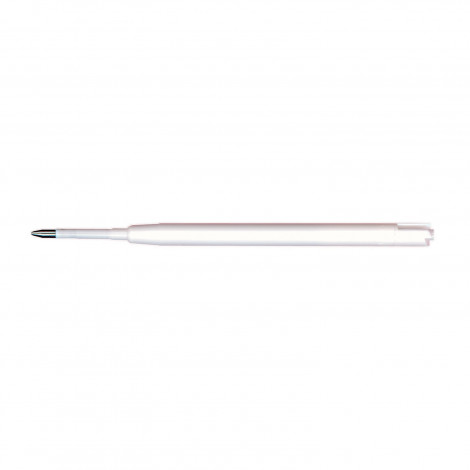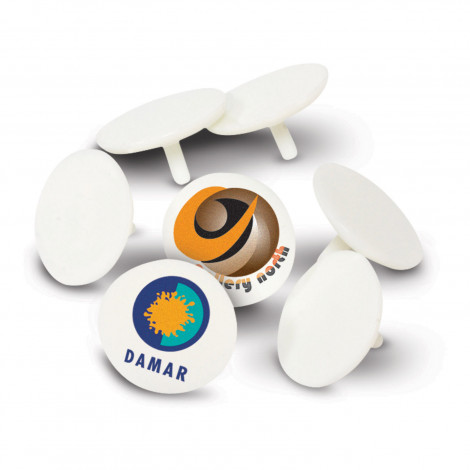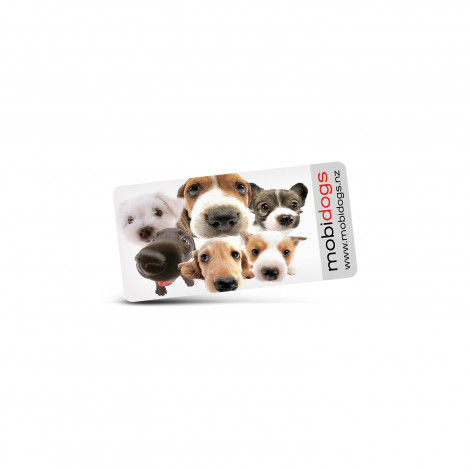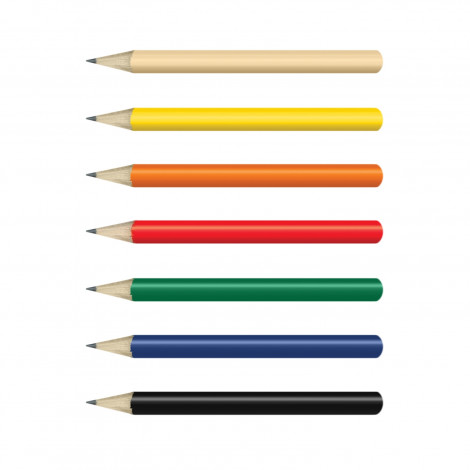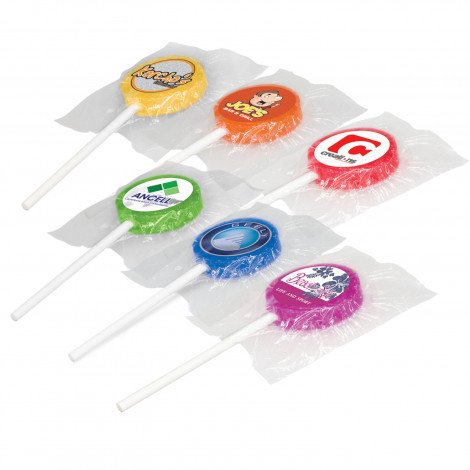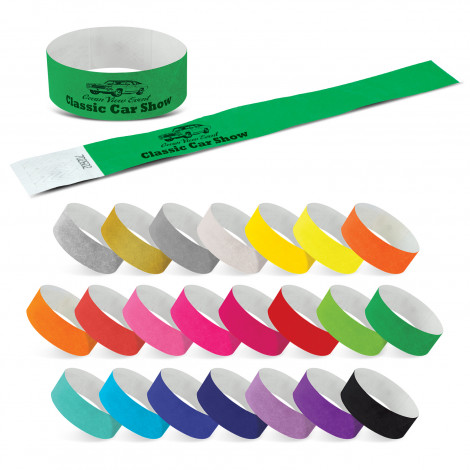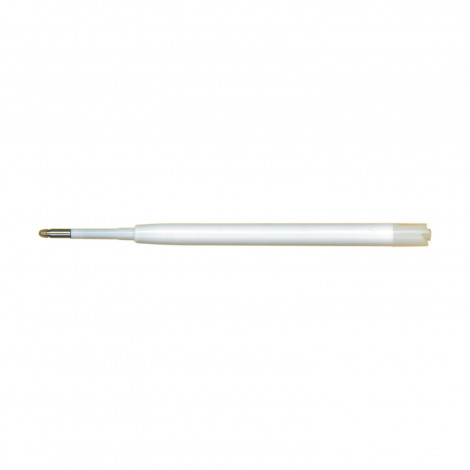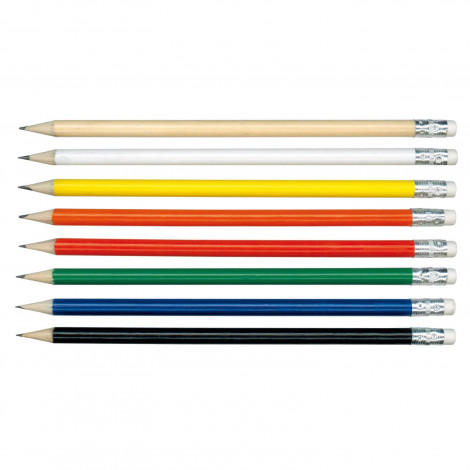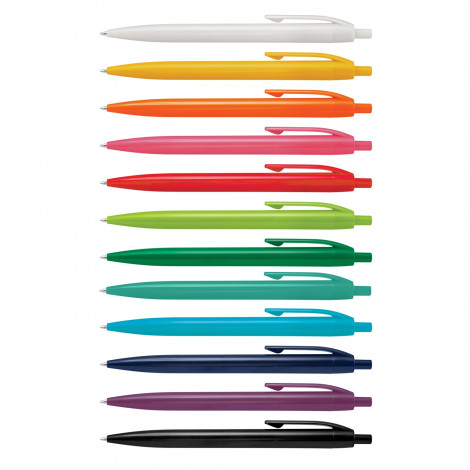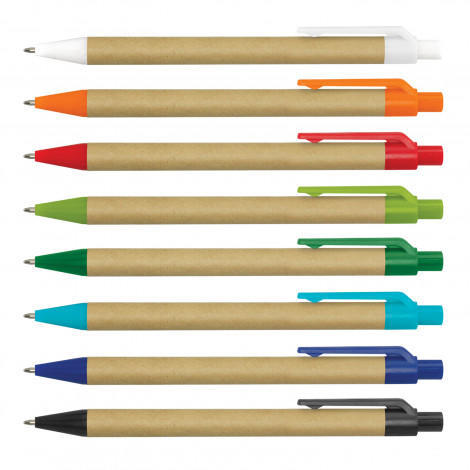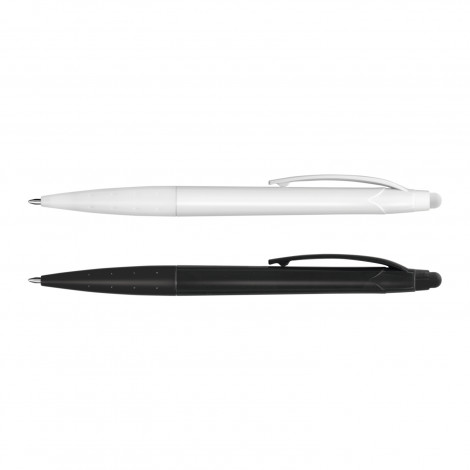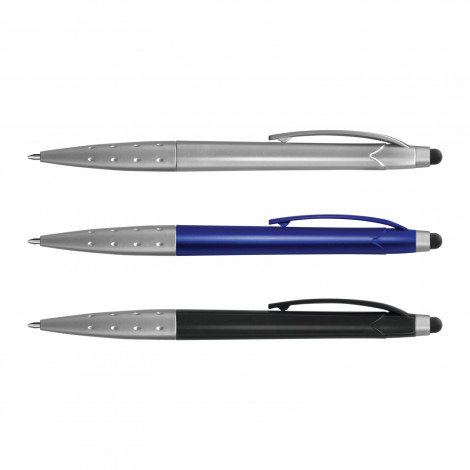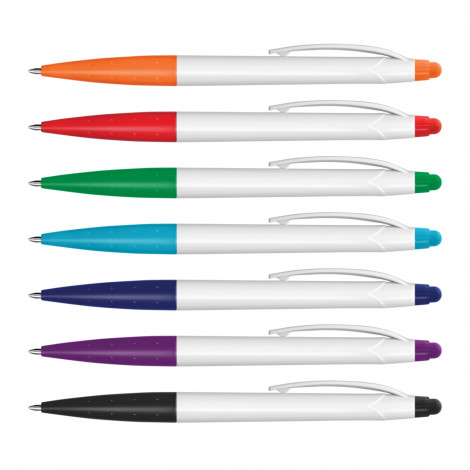The Psychology of Colour in Promotional Products
.jpg)
Key takeaway:
- Understanding color psychology in promotional products is crucial for effective marketing. Colors have the power to influence emotions and perceptions, making it important to choose the right colors to create desired consumer responses.
- Research shows that color has a significant impact on brand recognition and sales. By selecting colors that resonate with the target audience and align with brand personality, marketers can enhance brand perception and increase consumer engagement.
- It is important to consider gender and cultural perceptions when choosing colors for promotional products. Breaking gender stereotypes in color choices and being aware of cultural preferences can help brands create inclusive and relevant marketing campaigns.

Photo Credits: Highqualitypromo.Com.Au by Walter Wilson
Understanding the psychology of color in promotional products is crucial for effective marketing. In this section, we delve into the definition of color psychology in promotional products, as well as the importance of comprehending this aspect in your marketing strategies. With proven facts and figures, we explore the impact of colors on consumer behavior, allowing you to harness the power of color to make a lasting impression and drive successful marketing campaigns.Definition of color psychology in promotional products
Color psychology in promotional products studies how colors can affect consumer behavior and perception. It looks at how different colors can evoke emotions, affect preferences, and shape associations. Marketers must understand color psychology to pick colors that align with their brand personality and target audience, thus increasing brand recognition and driving sales.
Colors affect our feelings and views. For instance, warm colors like red and orange are often linked with energy and excitement, while cool colors like blue and green bring a feeling of serenity or trust. These associations can differ across cultures and genders, so marketers must take this into account when choosing colors for promotional products.
Research shows color plays a major role in boosting brand recognition and influencing consumer preferences. People have individual reactions to various colors, depending on their personal experiences and cultural backgrounds. Therefore, by understanding these preferences, marketers can pick colors that will appeal to their target audience, making their promotional products more effective.
When picking the right colors for promotional products, some factors need to be considered: the product/service being promoted, the target audience's expectations, and the desired brand personality. This way, marketers can create a consistent visual identity, which will draw attention and boost brand engagement.
To get the most out of color psychology in promotional products, certain best practices should be followed. Using contrasting accent colors helps create visual impact and focus attention on key design elements. Also, descriptive color names can enhance color appeal by forming a strong link between the color and its intended emotional response.
Gender and cultural perception must be taken into account when utilizing color psychology in promotional products. Gender stereotypes related to color should be challenged to guarantee inclusivity and meet diverse audience preferences. Moreover, cultural variations in color symbolism should be understood to avoid any unintended negative associations.
Several case studies show the successful use of color psychology in promotional products. Examining the impact of color choices on brand perception and sales can help marketers better plan future marketing strategies. This research helps to develop the trends in color psychology, as marketers search for new ways to incorporate colors into their campaigns.
Importance of understanding color psychology in marketing
Colors are key in marketing. They can stir up emotions and influence how consumers act. It's super important to know the power of color psychology in marketing. Colors have different meanings and associations. Marketers can use them strategically to make their brand stand out and help sell products. Studies give us insights into what colors people like. This helps marketers pick the right colors for their promotional products. The right colors can get attention, make customers happy, and shape the perception of your brand.
Case studies show how brands used color psychology to connect with their audience. But, it's important to remember that color preferences can vary by gender and culture. Marketers must factor this in when selecting colors. With new strategies and staying up-to-date on research, marketers can use the power of color in their campaigns.
The influence of color on consumer behavior can't be overstated. To make your marketing successful, you need to understand color psychology. Get ready to explore this vibrant world and see how it could bring your brand to success!
The Impact of Color on Consumer Behavior

Photo Credits: Highqualitypromo.Com.Au by Mark Walker
Colors have a powerful impact on consumer behavior, influencing emotions and perceptions. In this section, we explore how different colors can sway buyer decisions. From conveying trust and reliability to promoting excitement and energy, we'll delve into the psychology behind color choices in promotional products. Discover the associations and emotions triggered by specific colors, and gain insights into their potential effects on consumer responses.How colors influence emotions and perceptions
Colors have a great impact on our emotions and thoughts. They can evoke certain feelings and leave a lasting impression on consumers. Red and orange can give off an energetic and passionate vibe, while blue and green can bring calmness and relaxation.
The power of color is complex. It stimulates the brain's limbic system, controlling memories and emotions. For instance, the color red may be linked to danger or urgency, making the heart rate go up and gaining attention. On the contrary, blue is seen as trustworthy and reliable.
Colors can also affect how people perceive products and brands, even without knowing. For example, black in luxury logos gives off a sense of sophistication and exclusivity. Plus, different cultures have their own meanings for certain colors. Companies need to understand these cultural aspects to reach their target audiences.
Use colors in promotional products and make your brand stand out. By understanding how colors affect emotions and perceptions, your company can get a better connection with your audience.
Examples of colors and their associations in promotional products
Colors are hugely important for success in promotional products. Each color has its own associations with emotions and ideas, which can affect consumer behavior. Knowing these color associations is key to marketing strategies.
For example:
- Red: Excitement, passion and energy. Used to create urgency and capture attention.
- Yellow: Positivity, optimism and youthfulness. Evoke feelings of joy and cheer.
- Blue: Trustworthiness, calmness and reliability. To show professionalism and dependability.
- Green: Nature, growth and freshness. To emphasize eco-friendly or sustainable practices.
It's clear that colors can strongly impact consumers. Brands can use this to their advantage by using the right colors to express their message and influence behavior.
But, colors and their meanings can differ between cultures and people. So, it's important that marketers research what colors their target audience will associate with their brand. This will help to make sure their color choices represent their brand and connect with their market.
The choice of colors in promotional products should not be taken lightly: it can influence consumer emotions and perceptions. By selecting the right colors based on target audience preferences and culture, brands can create powerful campaigns that leave a lasting impression.
Research Findings on Color Psychology in Promotional Products

Photo Credits: Highqualitypromo.Com.Au by Harold Perez
Discover the fascinating research findings on color psychology in promotional products! Dive into the latest data on the effectiveness of color in enhancing brand recognition and driving sales. Explore consumer preferences and reactions to different colors and unlock the power of color in your marketing strategy. Get ready to harness the psychological impact of color to captivate your target audience and leave a lasting impression.Latest data on the effectiveness of color in increasing brand recognition and sales
Recent research has examined the effectiveness of color in increasing brand recognition and sales. A study of promotional products showed that certain colors could have a huge effect on consumer behavior. By understanding how color affects feelings and perceptions, marketers can use this knowledge to create more successful campaigns.
A table has been created to show the impact of color on brand recognition and sales. Red is high for brand recognition, but moderate for sales. Blue does the opposite - it's moderate for brand recognition and high for sales. Green is moderate for both.
It's important to remember that these findings may vary depending on audience, industry, and brand personality. But they still provide a valuable insight into the potential of color choices on marketing results.
Further research has found that people have different reactions and preferences regarding color. Being aware of these preferences can help marketers customize their promotional products to meet their target audience's tastes.
The Journal of Consumer Research has shown that when consumers have an emotional connection with a brand's color, they are more likely to remember it and make decisions based on that link.
Consumer preferences and reactions to different colors
Colors have an effect on consumer experiences and reactions. It is imperative for marketers to recognize how colors are interpreted by customers. Research in this field provides useful knowledge about the influence of color on feelings and ideas.
The effect of color on consumer behavior can be seen by their reactions to it. Preferences can differ depending on prior experiences, cultural backgrounds, and personal associations with colors. For example, some people may be drawn to warm colors such as red and orange due to energetic connotations, while others might prefer cool shades like blue or green for their tranquility. Considering these personal likes is essential when choosing colors for promotional products.
A study uncovering the links that customers have to certain colors used in promotional products had some interesting outcomes. Blue was seen to be linked to trustworthiness, reliability, and professionalism - making it a suitable color for banking businesses or healthcare companies. On the other side, red was found to create feelings of excitement and urgency - suitable for promotions or sales events.
In addition, gender has an important role in color preferences among customers. Women usually prefer softer tones such as pastels or light pink, while men usually favor darker hues or primary colors. It is important to keep in mind that individual tastes can vary significantly.
Adam Alter from New York University's Stern School of Business conducted research into the effects of color on customer behavior. His research, "The Psychology of Color in Marketing," concluded that up to 90% of decisions about products are based solely on color.
Choosing the Right Colors for Promotional Products

Photo Credits: Highqualitypromo.Com.Au by Kevin Torres
When it comes to choosing the right colors for promotional products, several factors come into play. From considering the brand personality to understanding the preferences and characteristics of the target audience, color selection is a strategic process. In this section, we will explore the key factors to consider when selecting colors for promotional products and how to align these choices with the brand's personality and the preferences of the target audience.Factors to consider when selecting colors for promotional products
When picking colors for promo products, there are several things to consider that can affect marketing success. Knowing the psychology of colors is key to making a strong brand and connecting with desired audiences.
- First, think about the emotions colors evoke. Colors have the ability to stir up certain feelings in customers, such as red being connected to energy and excitement, while blue is linked to dependability and trust.
- Also, consider cultural associations and perceptions of colors. Different cultures may have diverse likes and understandings of certain colors, so it's important to keep this in mind when selecting colors for promo items used in different places.
- Also, pick colors that fit the brand's personality. Each color has its own unique meanings and implications, so choosing colors that line up with the company's values and positioning can help build recognition and customer trust.
- Take into account the target audience as well. Certain demographics may react differently to certain colors due to age, gender, or individual preferences. Knowing what the target audience likes can enhance the success of promotional efforts.
- Contrast is another factor to consider. Using contrasting accent colors can make a visual impact and make promo materials stand out from competition.
- Finally, descriptive color names can boost color appeal. Giving colors descriptive labels that remind people of positive emotions or connections can make promo items more attractive to customers.
By thinking about these things when selecting colors, marketers can utilize color psychology to create powerful campaigns that hit the mark with target audiences.
How to align color choices with brand personality and target audience
Colors are key for connecting a brand's personality with its target audience. Color psychology in marketing helps pick the right colors that match the brand's values and appeal to the desired audience. Here's how to align color with personality and target audience:
- Identify Brand Personality: Start by defining your brand's traits, values, and objectives. These will help you pick colors that accurately represent your brand.
- Learn Color Associations: Get acquainted with how colors evoke emotions and perceptions. For example, warm colors (red, yellow) can give off energy and excitement; cool colors (blue, green) bring calmness and trust.
- Research Target Audience: Study your target audience's demographics, preferences, cultural backgrounds. This info will help you choose colors that appeal to their tastes.
These steps act as a guide for aligning color with brand personality and target audience. Stay up-to-date on emerging research and trends to implement effectively. By picking the right colors that match your brand and appeal to your audience, you can create a strong connection that boosts brand recognition, loyalty, and success in marketing campaigns. Add a splash of color to your promotional products and watch your brand sparkle!
Best Practices for Using Color in Promotional Products

Photo Credits: Highqualitypromo.Com.Au by Philip White
When it comes to promotional products, the use of color plays a crucial role in capturing attention and leaving a lasting impression. In this section, we will uncover the best practices for using color effectively. We'll explore how contrasting accent colors can create visual impact, as well as the power of descriptive color names in maximizing color appeal. Prepare to discover the psychology behind color choices and unleash the potential of your promotional products.Using contrasting accent colors to create visual impact
Incorporating contrasting accent colors into promotional products is a great way to create visual impact! Opposite colors on the color wheel and high contrast colors will grab attention and make a lasting impression.
These colors can draw the eye to important elements like the brand logo or messaging. Contrasting colors can also bring energy and excitement, aiding in brand recognition and engagement.
Furthermore, contrasting colors make it easier for consumers to understand and remember the message. They may also evoke strong emotions and associations, positively influencing consumer behavior.
Pro Tip: When using contrasting accent colors, consider your brand's personality, target audience, cultural associations, and gender perceptions. This will create an inclusive and powerful color scheme for your promotional products.
Maximizing color appeal through descriptive color names
Descriptive color names can maximize color appeal. They evoke emotions and perceptions in consumers. For example, "energetic red" or "tranquil blue" can convey feelings. This approach grabs attention and connects the brand to the audience. When used effectively, it enhances the effectiveness of promotional products.
To maximize color appeal:
- Use contrasting accent colors to create visual impact.
- Incorporate bold and vibrant colors to draw attention.
- Accurately describe the shade or hue.
- Align color choices with brand personality and target audience.
Pro Tip: Research or test chosen names to ensure they reflect consumer perceptions and resonate with the target audience.
Gender and Cultural Considerations in Color Psychology

Photo Credits: Highqualitypromo.Com.Au by Randy Johnson
Gender and cultural factors play a significant role in color preferences, which is crucial to consider when it comes to promotional products. In this section, we will explore how gender and cultural perception influence one's choice of colors. Additionally, we'll delve into the fascinating topic of breaking gender stereotypes in color choices for promotional products. By understanding these nuances, we can effectively create marketing campaigns that resonate with diverse audiences and challenge societal norms.The role of gender and cultural perception in color preferences
Gender and cultural perception of colour are a must-consider when it comes to marketing. Different genders and cultures have their own preferences when it comes to colours. Knowing these can help marketers design promotional materials that work for their target market.
For instance, some shades can be linked to masculinity or femininity in certain cultures. Taking note of these gender and cultural ideas of colour can influence how consumers react to products. Matching the colours to the target audience's preferences can create a stronger emotional bond.
Certain colours have universal meanings. Red is passion, blue is trustworthy. But other colours can mean different things in different cultures. Black is mourning in Western cultures, yet power and wealth in Eastern. Marketers should research into the cultural meaning of colours to avoid any negative effects.
By thinking of gender and cultural perceptions of colour, marketers can go beyond traditional stereotypes. Rather than using pink for women and blue for men, they can make their promotional materials more inclusive and appeal to a larger audience.
An example is Pantone's Ultra Violet as its Color of the Year 2018. This was seen as a move away from gender-based colour associations, celebrating individualism and spirituality. The colour was a global hit, showing the power of inclusive colour choices in marketing.
Breaking gender stereotypes in color choices for promotional products
Challenge gender stereotypes in marketing campaigns with captivating color choices in promotional products. Understand the points to make informed decisions. Opt for neutral colors or defy conventions with unexpected palettes. Offer customization options and consider cultural sensitivities. This will help break away from traditional gender norms and attract a broader customer base. Unlock the rainbow of success!
Case Studies: Successful Use of Color in Promotional Products

Photo Credits: Highqualitypromo.Com.Au by Randy Green
Discover how color psychology drives the success of promotional products as we dive into captivating case studies. Learn from brands that have harnessed the power of colors to effectively communicate their messaging and influence customer perception. Uncover the impact of color choices on brand reputation and sales, supported by real-world examples and insightful analysis. Get ready to uncover the secrets of using color strategically in your promotional endeavors.Examples of brands that have effectively utilized color psychology
Color psychology is a powerful tool for brands. It helps them create effective promotional products. It lets them understand how colors affect customer behavior. This helps them increase brand recognition and sales.
Coca-Cola is one example. They use red in their branding. Red evokes excitement and energy. It reflects the brand's joy and happiness.
Tiffany & Co. use a distinctive shade of blue for their jewelry boxes. This creates an association with luxury and elegance.
McDonald's use yellow and red in their logo and packaging. Yellow stands for happiness and positivity. Red stimulates appetite and urgency. This encourages customers to make quick purchases.
These companies have effectively used color psychology. They chose colors that align with their brand image and target audience. This has helped them create impactful promotional products.
Analyzing the impact of color choices on brand perception and sales
Colors have the power to shape emotions and perceptions, forming strong emotional connections between consumers and brands. Different colors denote specific meanings, like red for excitement, blue for trustworthiness, and green for nature or sustainability. Research findings have backed color's effectiveness in raising brand recognition and sales, making analysis of its impact vital.
Consumer preferences and reactions to color can vary based on culture and gender. Hence, marketers should consider factors like target audience's preferences, brand personality, and industry trends when selecting colors for promotional products. Contrasting accent colors can be used to create visual impact and draw attention.
Exploring the effect of color choices on brand perception and sales is more than picking attractive colors. It includes taking into account cultural perception, gender stereotypes, and research trends in color psychology. By challenging gender stereotypes in color choices for promotional products, companies can reach out to a broader consumer base. Examples of successful use of color psychology demonstrate its potential in boosting customer engagement. Future trends in color psychology open possibilities for creative strategies, incorporating new developments into marketing campaigns.
Future Trends in Color Psychology for Promotional Products

Photo Credits: Highqualitypromo.Com.Au by Thomas Carter
As color psychology continues to shape promotional products, this section explores the future trends in this field. Dive into emerging research and developments that uncover the impact of colors on consumer behavior. Discover innovative strategies for effectively incorporating color psychology into your marketing campaigns. Stay ahead of the competition by harnessing the power of colors to influence your target audience.Emerging research and developments in color psychology
Researchers are always on the lookout for the latest findings on color psychology and how colors can impact brand recognition and sales. They take into account factors such as brand personality and target audience when choosing colors for marketing campaigns.
This research is special because it pays attention to gender and cultural differences. Studies have found that gender and background can affect color preferences. Brands can break these stereotypes by using a broader range of colors in their promotional products, targeting a more diverse audience.
To make sure the colors match what the target audience likes, surveys or focus groups are recommended. This will give insight into the target audience's color preferences and help decide which colors to use.
Innovative strategies for incorporating color psychology into marketing campaigns
Incorporate the psychology of color into your marketing campaigns with innovative strategies! Understand how colors influence emotions and perceptions in order to create impactful campaigns that resonate with your target audience. Consider factors such as gender, cultural perception, and maximize color appeal with descriptive color names and contrasting accent colors.
Research consumer behavior and preferences for colors to tailor promotional products. Analyze case studies of successful brands to gain insights into the power of color choices on brand perception and sales.
Stay up to date on emerging research and developments in color psychology to discover innovative strategies. This includes understanding consumer preferences, utilizing advancements in technology, and leveraging cultural influences on color perception.
Color your promotional products with the psychology of color for a brand that stands out like a kaleidoscope in a world of black and white!
Conclusion

Photo Credits: Highqualitypromo.Com.Au by Jack Gonzalez
As we conclude our exploration of color psychology in promotional products, it is essential to recap the importance of this field in successful marketing. By understanding how colors can influence emotions, perception, and brand recognition, businesses can implement effective color strategies to enhance their promotional efforts. In this final section, we will discuss key takeaways for incorporating these strategies into your marketing campaigns, ensuring that the colors you choose resonate with your target audience and enhance brand engagement.Recap the importance of color psychology in promotional products
Color psychology is significant for promotional products. Knowing how colors influence consumer actions is essential for creating effective marketing campaigns. Colors can make emotions and affect perceptions; hence, it is important to ponder color choices in promotional products. Studies show that certain colors can boost brand recognition and sales, emphasizing the need to use color psychology efficiently. Moreover, consumer responses and reactions to different colors can vary, stressing the requirement for careful thought when choosing colors for promotional products.
In selecting the right colors for promotional products, there are various things to consider. These include learning how different colors match brand personality and target audience preferences. Selecting colors strategically, based on their implications and meanings, can make a strong visual impact. Accent colors can be used with main colors to enhance appeal and draw attention. Plus, descriptive color names can amplify the appeal of promotional products by stirring up specific emotions or associations.
Gender and cultural aspects also influence color psychology for promotional products. Preferences for certain colors can differ based on gender or cultural opinions. Brands should try to break gender stereotypes by choosing colors that attract a wider audience. By doing so, they can create inclusive marketing campaigns that resonate with different consumers.
Good examples show the effect of color selections on brand perception and sales. Various brands have employed color psychology in their promotional products, resulting in higher brand recognition and customer engagement. Examining these cases assists in identifying the strategies that contribute to success.
Looking into future trends, new research continues to illuminate the complex dynamics of color psychology. As technology evolves, creative ways are being made to combine color psychology into marketing campaigns more effectively. This includes using augmented reality or virtual reality platforms to improve consumer experiences through customized color interactions.
To conclude, the importance of color psychology in promotional products is fundamental for successful marketing campaigns. The way colors stir up emotions and affect perceptions can severely impact brand recognition and sales. By cautiously picking colors that align with target audience preferences, breaking gender stereotypes, and including creative strategies, brands can create effective promotional products that resonate with consumers.
Key takeaways for implementing effective color strategies in marketing
Color psychology is an essential part of marketing. It can affect consumer behavior. Knowing how colors affect emotions and views can help businesses choose the right colors for their products. Using contrasting accent colors can make a visual statement and draw attention. Descriptive color names can make promotional products more attractive. Brands must consider their target audience and brand personality when selecting colors.
Gender and cultural considerations in colors are important to create an inclusive atmosphere and break stereotypes. Analyzing the color strategies of successful brands gives insight into how to use color psychology. There is also new research and developments in color psychology that could be used for innovative marketing campaigns. Staying updated on the latest findings can help businesses stay ahead and improve their marketing efforts.
Using effective color strategies in marketing requires understanding how colors influence behavior. This has led to research on the topic. Brands recognize the importance of selecting the right colors for their products. Colors can increase recognition, create positive associations, and increase sales. Understanding gender and cultural perception of colors makes strategies more inclusive and effective.
Some Facts About The Psychology of Color in Promotional Products:
- ✅ Color psychology in marketing and branding influences consumers' impressions and purchasing decisions. (Source: Team Research, Help Scout)
- ✅ Over 80% of consumers' buying decisions are based on color, and it increases brand recognition by 80%. (Source: Team Research, Brandminds)
- ✅ Different colors evoke specific emotions and perceptions, such as blue for trust and red for power. (Source: Team Research, Wix Answers)
- ✅ Gender and cultural differences influence color preferences, but brands can challenge stereotypes and still succeed. (Source: Team Research, Help Scout)
- ✅ Choosing the right color and using contrasting accent colors can help a brand stand out and be more memorable. (Source: Team Research, Brandminds)

